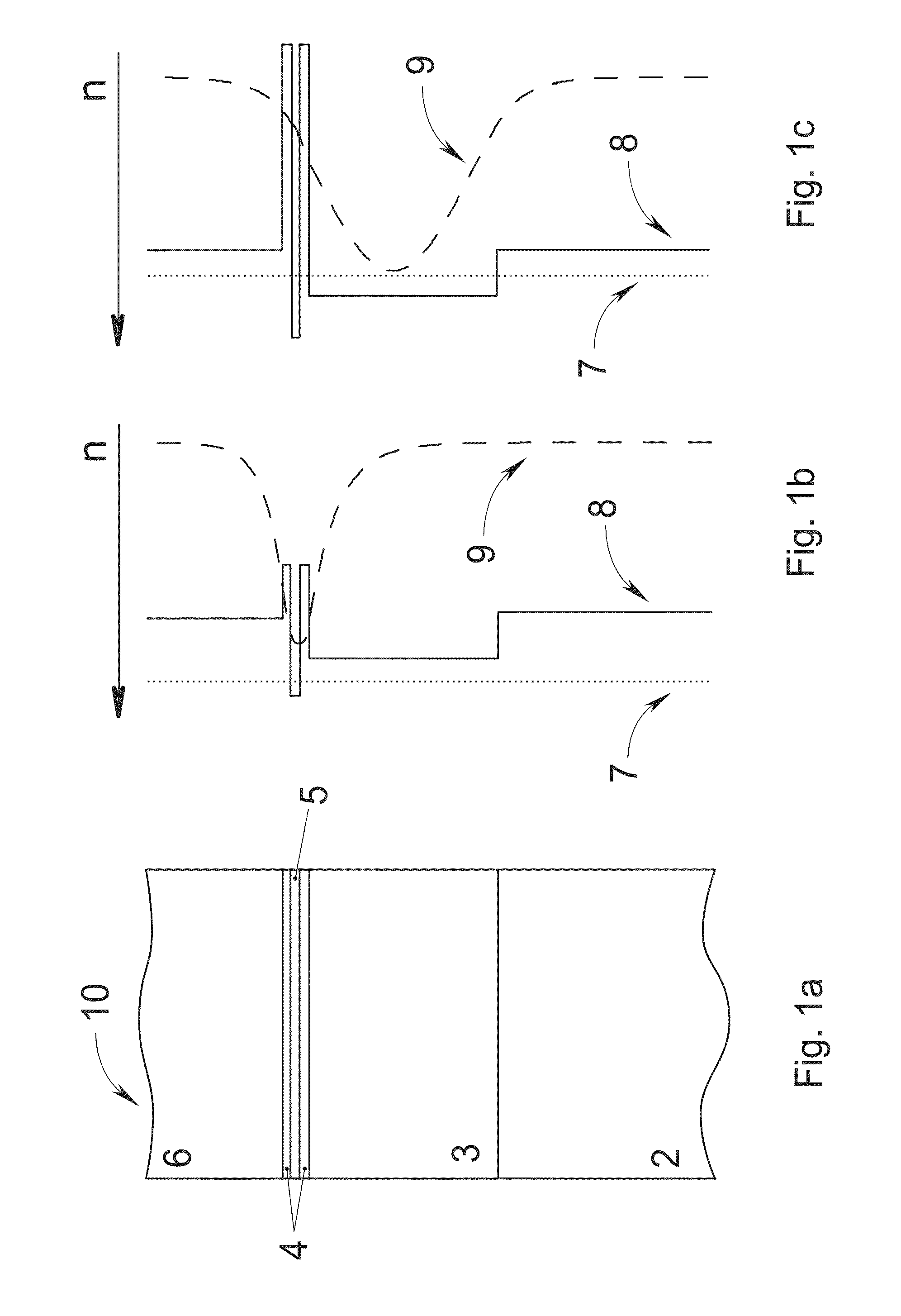Adiabatic Mode-Profile Conversion by Selective Oxidation for Photonic Integrated Circuit
- Summary
- Abstract
- Description
- Claims
- Application Information
AI Technical Summary
Benefits of technology
Problems solved by technology
Method used
Image
Examples
Embodiment Construction
[0038]In order to overcome the drawbacks of the prior art, the waveguide design and fabrication method are based on the selective oxidation technology for adiabatic mode-profile conversion in the vertical monolithic integration of active devices with passive elements into a single photonic integrated circuit with improved manufacturability and reliability. Some optical devices for which the methods and devices of the present invention could be used include, but are not limited to, lasers, photodetectors, modulators, light emitting diodes, amplifiers, detectors, power splitters, switchers, filters, multiplexers, array waveguide gratings, and passive waveguides.
[0039]“Adiabatic”, as defined herein, means gradually or smoothly, and with negligible power losses / scattering / interference. “Adiabatic mode transformation”, as defined herein, means gradual mode transformation with negligible power losses. A “single-step ridge” and “single-step ridge waveguide”, as defined herein, are ridge st...
PUM
 Login to View More
Login to View More Abstract
Description
Claims
Application Information
 Login to View More
Login to View More - R&D
- Intellectual Property
- Life Sciences
- Materials
- Tech Scout
- Unparalleled Data Quality
- Higher Quality Content
- 60% Fewer Hallucinations
Browse by: Latest US Patents, China's latest patents, Technical Efficacy Thesaurus, Application Domain, Technology Topic, Popular Technical Reports.
© 2025 PatSnap. All rights reserved.Legal|Privacy policy|Modern Slavery Act Transparency Statement|Sitemap|About US| Contact US: help@patsnap.com



